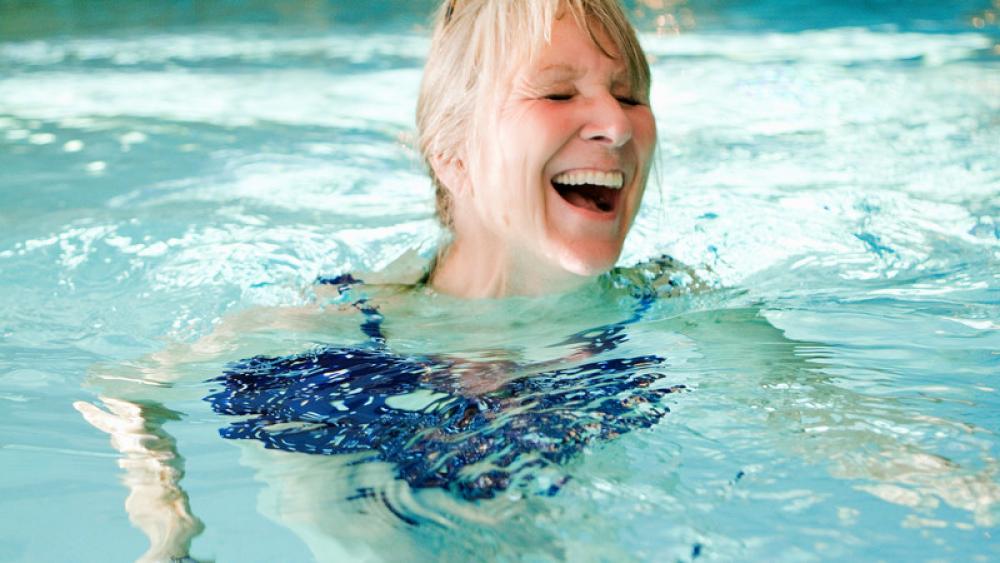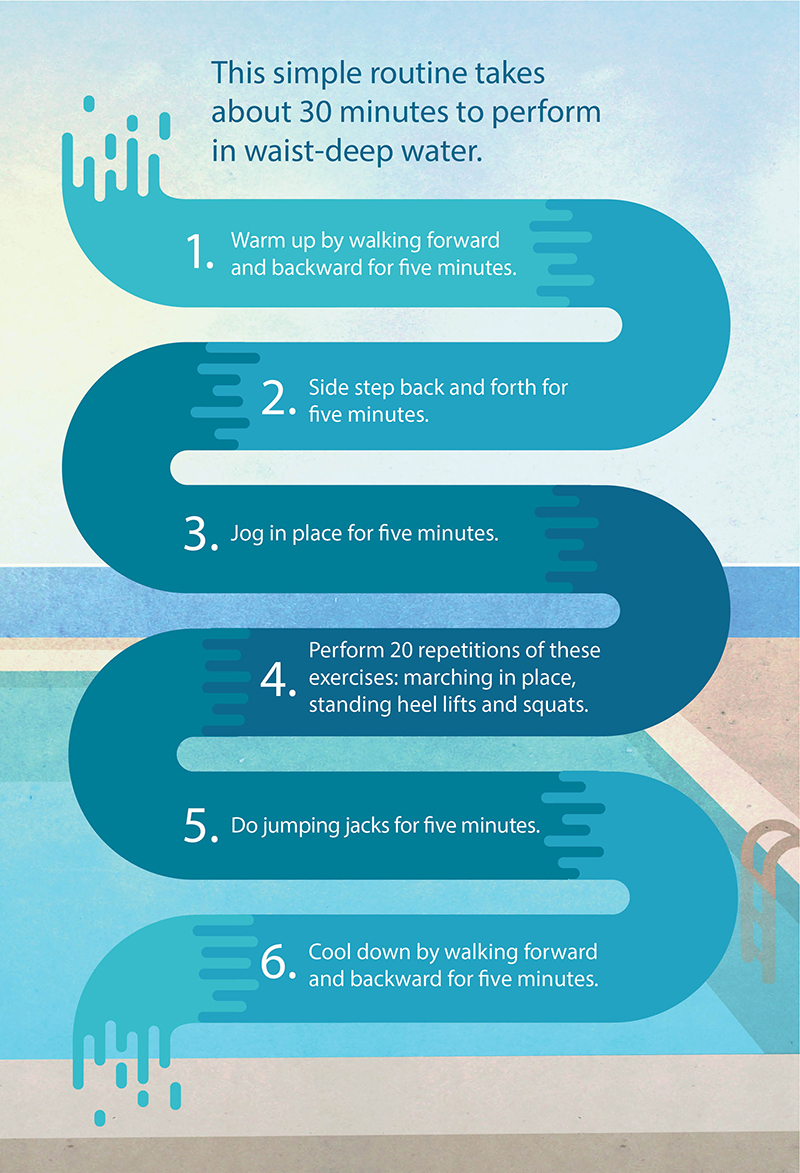




Healthy Lifestyle
Aquatic Exercise Can Mix up or Jump-start Your Workouts


It’s a familiar story.
You know that staying active is critical to your health and quality of life, but it can be tough to find the time, energy and motivation. The challenge can be even greater as temperatures fall, winter weather arrives and you spend more time indoors.
Does this ring a bell?
Inactivity can lead to a host of problems: weight gain, loss of strength and flexibility, aches and pains, high cholesterol, high blood pressure, and diabetes. When you don’t feel good, you might start feeling depressed. Your motivation to be active and care for yourself can decline. And when you’re used to being inactive, incorporating any kind of new activity can often be painful.
Here’s an idea to shake things up: Dip your toe into aquatic exercise.
Should I try aquatic exercise?
Exercising in the water is a great option whether you’re caught in the vicious cycle of inactivity, need a workout that’s easy on your body or just want to mix up your routine. Consider this:
Almost anyone can do it: No, you don’t have to know how to swim to exercise in the pool. In fact, you don’t even have to get your hair wet.
It’s low-impact: Thanks to your body’s buoyancy in the water, an aquatic workout is gentle on the joints and often causes less soreness than land-based exercise. High-impact activities such as hopping, jumping and running can be performed with more ease and less joint pain in the water.
It combines many health benefits: The resistance of the water helps strengthen your muscles. Even the simplest pool exercises such as walking forward and backward in waist-high water can improve your balance, train the core muscles of your abdomen, increase your flexibility and boost cardiovascular fitness. You’ll burn calories, reduce fat and lose weight at the same rate as working out on land.
Where do I begin?
Aquatic exercise is great for injured athletes, older individuals, runners who want a break from land-based exercise or those with health conditions that can make some types of exercise challenging.
As with starting any new exercise program, you should speak with your Methodist Physicians Clinic primary care provider first. Depending on your needs, you may be referred to the Methodist Aquatic Therapy Program.
If you’re given the green light for normal exercise, see if your local gym offers aquatic classes. Or try the following routine.

So, what are you waiting for? Make a commitment to stay active this winter – and year-round – by incorporating aquatic exercise into your routine. Before you know it, you’ll be on your way to a healthier you!


